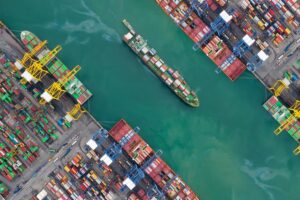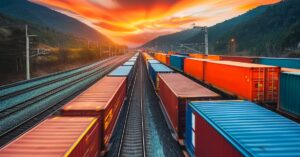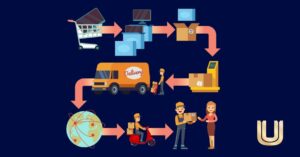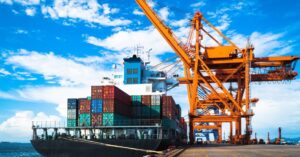Whether you’re shipping freight domestically or internationally, it’s rare to use just one method of transportation. Many facilities can’t accept direct ship or rail deliveries. This is where transloading services come into play, providing the final step to get your products to strategic locations. But what exactly are transloading services, and why are they essential?
With the rise of international trade and e-commerce, transloading services have become more common. They enhance supply chain efficiency, reduce costs, and improve customer satisfaction by streamlining the movement of goods.
In this blog, we’ll explore what transloading services are, how they work, their differences from intermodal shipping, and their benefits.
What Are Transloading Services?
Transloading services involve transferring goods from one mode of transportation to another along a specific route. This involves unloading freight from one vehicle and loading it onto another. Typically, transloading occurs between rail cars or containers and trucks. But when rail service isn’t available, planes and ocean freight containers may also be used.

These services offer flexibility and cost savings, varying based on the transportation method used and the type of goods shipped. Common transloading services include:
- Rail Transload
- Barge Transload
- Bulk and Dry Bulk Transload
In the shipping and logistics industry, transloading is valued for its ability to reduce shipping costs while providing greater flexibility.
Transloading Facilities
When moving cargo between various forms of transportation, a transloading facility is an essential hub. These facilities, which are usually found close to highways or railroads, make it easier for freight to transfer efficiently from railcars to trucks or the other way around. Perishable items that are conveyed by rail, for example, can be loaded onto trucks at a transloading facility and then delivered to grocery stores that do not have access to trains.
These facilities are arranged in a way that facilitates quick transloading and smooth transitions between modes of transportation. With heavy lift equipment, conveyor belts, and forklifts, they make it possible to load and unload freight quickly and efficiently while lowering the possibility of damage. Transloading facilities also have the ability to manually load and unload, meeting all requirements in one handy location.

How Do Transloading Services Work?
Container movements into and out of ports are made more efficient by transloading services. This is how it usually operates:
- Arrival at Facility: A transloading facility, often located close to a port, receives a container.
- Palletizing items: Since many ocean cargo containers are floor-loaded, items are frequently palletized at the facility.
- Transfer and Delivery: After being palletized, the items are either loaded into a truck or transferred to a domestic container in order to be delivered to their final location.
Moving cargo between trucks and trains is another aspect of transloading. This is how the procedure operates:
- Loading onto Truck: Goods are loaded onto a truck and driven to a facility that transloads them.
- Final Delivery: After that, the items can be put back onto trucks in preparation for their last delivery.
Transloading maximizes the use of various modes of transportation, which improves supply chains’ flexibility and efficiency. Take a look at some more benefits.

Benefits of Transloading Services
For shippers, transloading services provide a number of important benefits:
- Cost Reduction: Shippers can reduce their transportation expenses in a number of ways via transloading. First of all, it makes packing more effective because products from several ocean containers can fit into fewer trailers or domestic containers. This lowers the amount of wasted transportation expenses and the number of journeys that are required. Further lowering overall shipping costs is the removal of the requirement for pricey ocean containers for inland shipping through transloading at ports.
- Supply Chain Efficiency: Transloading expedites and saves time in the supply chain by enabling direct shipment from ports to destinations. Delivery times to customers can be accelerated by using specialized transloading facilities, which can potentially do away with the requirement for intermediary distribution centers. These facilities also provide value-added services like palletizing and shrink-wrapping, which increase productivity and cut expenses.
- Faster Delivery: Transloading eliminates the need for distribution centers, allowing for faster delivery. Product sorting at transloading facilities close to ports expedites delivery, similar to distribution centers but with much shorter transit durations. Furthermore, transloading shortens the dwell time for shipments, guaranteeing that goods proceed through the supply chain quickly and without needless delays.

Streamline Your Supply Chain with Unilogic
Unprecedented cost reductions and operational efficiency can be obtained by Chicago firms using Unilogic’s state-of-the-art transloading solutions. Our tailored strategy makes sure that cargo is transferred between different modes of transportation smoothly, maximizing the efficiency of your supply chain.
At Unilogic, we are aware of the particular logistical difficulties that businesses that move freight in the Chicagoland encounter. Our knowledgeable staff customizes every solution to match the unique requirements of regional businesses, whether they are based in the city or abroad. Businesses in Chicago can cut expenses, get rid of delays, and optimize their processes for optimal efficiency by utilizing our transloading services.
You can take advantage of a multitude of alternatives for economical and successful cargo movement by working with Unilogic as your reliable partner.


